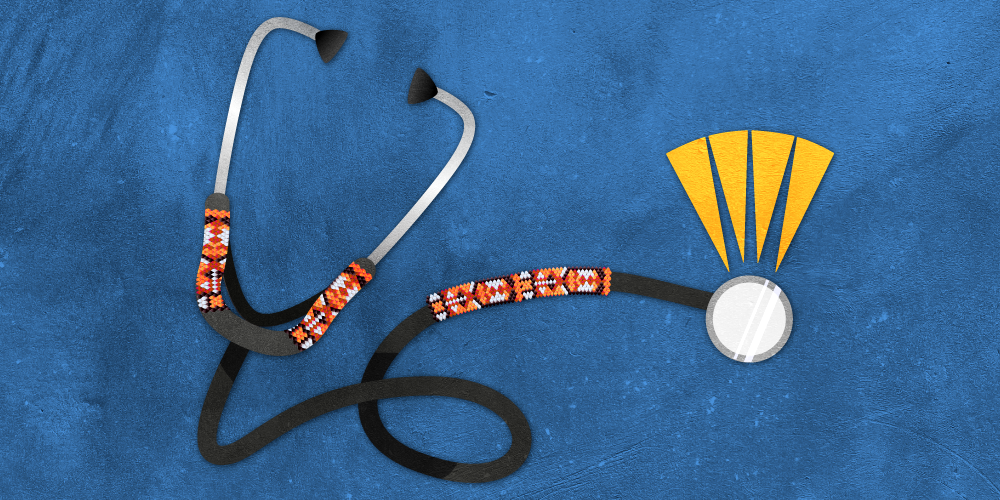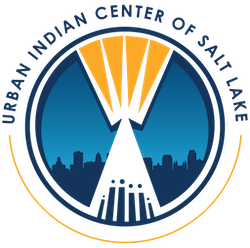espite treaties with tribes and federal legislation guaranteeing healthcare for our country’s indigenous populations, Native American communities still battle massive barriers to quality care.
The rising costs of health services, inadequate funding and limited access to care have contributed to an increased rate of preventable illnesses in American Indian tribes.
We (Danielle Puri and Joshua Twitchell) are nurse practitioners from the Urban Indian Center of Salt Lake (UICSL). We hope to highlight the importance of cultural responsiveness in healthcare for Native patients and share our tips for overcoming possible obstacles to care.
I (Josh) was 9 years old when my great grandpa, a Native American of the Chickasaw, and Cascade Nations, was diagnosed with emphysema and lung cancer. After his passing, members of my family expressed their frustration, as they felt they were not appropriately educated regarding his disease process and prognosis. It was one of the few times I saw the prominent people in my life upset, and the experience inspired me to pursue a career in healthcare. I became a nurse practitioner to ensure all of my patients understand their individual journeys and to serve a population that I care deeply about.
My (Danielle) grandpa was a Jewish man living in Europe during World War II. When his family was forced to flee, he learned to speak eight languages as they fled across Europe. I grew up hearing about his experiences living in all those different places. His story helped me develop a passion for community health work. Although I knew I wanted to provide quality care for disadvantaged populations, it wasn’t until I worked at a hospital in Haiti and witnessed the exceptional care of the nurses that I decided to become a nurse myself.
A burgeoning partnership
The Urban Indian Center of Salt Lake (UICSL) has been a community pillar since the 1970s. In 2019, the UICSL wanted to expand their services to offer onsite care for patients with type 2 diabetes.
The UICSL had previously established a relationship with the U of U’s College of Nursing through local health fairs. When they decided to hire an on-site family nurse practitioner to help build a family practice within the Center, they reached out to the College of Nursing, and I (Danielle) took the job. That partnership has grown alongside the Center ever since.
While the arrival of the pandemic forced us to change our initial plan of how the clinic would function, we had the opportunity to first respond to COVID needs of the community. Since the Indian Health Service sent the COVID-19 vaccines out much faster to affiliated partners than the local health departments, we organized COVID immunization, testing and treatment clinics for the community.
We developed the family practice clinic from there. The College of Nursing provided the staff for a primary care clinic, as well as a psychiatric nurse practitioner to work with the Center’s own therapists to address the needs of patients with mental health concerns.
Addressing the health needs of Native patients
At the UICSL, we address several health needs that are unique to our Native patients.
Healthcare access: Historically, indigenous tribes made agreements with the US government guaranteeing that, in exchange for land, the US government would provide healthcare for all Native people.
Native Americans living on reservations have access to full comprehensive primary and specialty care through the Indian Health Service facilities. If patients require health services that they cannot access on the reservation, the Indian Health Service will pay for referred care for them.
But when Native people move to the city, that process breaks down and they often face barriers to care. They frequently don't have commercial insurance, they encounter limited access to culturally competent providers, and they must overcome astronomical healthcare costs.
Health literacy:
One of the most significant challenges indigenous people face in health care is health education gaps. Those with Native American backgrounds typically have lower rates of health literacy and post-secondary education than other U.S. populations.
As providers, we’re responsible for helping our patients understand their diagnoses and treatments, regardless of their education level.
I (Josh), for instance, am such a visual learner. I’ve found that most Native American people that I've interacted with, both at Urban Indian and in my personal life, are also visual learners. When I see my patients, we draw and write things out. I provide diagrams to depict different body parts and demonstrate how they function. This helps my patients understand how we’re helping them so they can make informed decisions.
Cultural barriers: We’ve learned that there’s no “right” way to practice medicine. We often fail to realize that our patients struggle to find a balance between modern medicine and their cultural beliefs. For instance, some patients may prefer to have a shaman present. Many tribes believe in the healing effects of burning sage or cedar. Even if we don’t fully understand these practices, we can view them as an opportunity to learn.
Knowing the U.S.’s devastating history of abuse and exploitation, it’s easy to understand indigenous populations’ deep-rooted mistrust in our healthcare system.
We’re responsible for breaking down those barriers and restoring trust by focusing on our patients’ cultural needs in healthcare.
At the UICSL, we try to blend some of these cultural elements into our practice. Our goal is to help our Native patients feel welcome and secure by overcoming obstacles and improving overall patient access.
Here are a few ways the UICSL builds trust with Native patient populations:
- We create consistency and comfort: The Urban Indian Center is a huge cultural center where our patients have reliable access to providers they know. We strive to decrease their fear and anxiety by prioritizing their comfort. We guarantee they will have access to quality care when they need it, regardless of their insurance status.
- We show up for the community: The Urban Indian Center isn’t just a healthcare clinic, we're also a community center, so we host a lot of events ranging from health fairs to powwows. Many of our coworkers and patients remember meeting Santa or coming to powwows when they were growing up at the Urban Indian Center. Some even met their spouse at these events. This building has cultural and historical significance for many people, so we understand how important it is to be present and support our patients out of the exam room.
- We blend culture with care: Above all, we understand that our scientific knowledge is not the only component to providing culturally competent care. For instance, many patients will share with us that they believe they acquired their health condition in association with a natural phenomenon, like lightning or another natural occurrence.
Even though it may be different than our own personal belief system, it’s essential to acknowledge that their feelings about their health are valid.
Practicing cultural responsiveness
Here are some simple ways to practice cultural responsiveness:
Learn about Native Cultures: Build a foundation of knowledge about where your patients come from. Our local population is comprised of multiple Native cultures, and we try to learn about each of their unique histories and traditions.
Here are some easy ways to explore the diverse cultures around you:
-
Check out the Native exhibit at the Natural History Museum.
-
Attend the annual American Indian Resource Center’s indigenizing workshop during the University of Utah’s Day of Collective Action.
-
Peruse medical journals or websites with content on caring for Native cultures, the Urban Indian Health Institute reports are a great starting point.
-
Read books by indigenous authors.
Ask your patients for their preferred name: Never assume the tribe or name of your patient. Ask how patients prefer to be addressed, this may include what Nation they may belong to. This not only helps establish trust and builds rapport but can also help providers gain context. With trust established, patients feel more comfortable volunteering information, which typically leads to better patient outcomes.
Give your patients time to respond: Native people often respond a little slower. They are very thoughtful and intentional with their words, so practice patience with each of them. Understand that this is an incredibly important part of their culture and give them time to express themselves as they choose.
Talk with your staff: When it comes to enhancing patient outcomes, we must be transparent with our staff. Don’t be afraid to ask questions or share your personal experience.
One of the greatest ways to overcome healthcare disparities is by learning about these rich cultures.
Share your intentions: One thing we’ve learned from our Native colleagues is the importance of stating your intention when you walk into the room. Before you knock on the door ask yourself, "What is my intention?" We often mirror the emotions of those we interact with, so taking a moment to collect yourself and set a positive intention can help your patient feel at ease.
Questions to ask patients to build trust
Establishing trust and rapport with patients is crucial for providing culturally safe care. Instead of starting appointments with direct medical questions, it's important to initiate conversations in a way that feels welcoming and respectful. One approach is to begin by asking about the patient's preferred name, allowing them to share information about themselves naturally.
For instance, a simple question like "What name do you prefer I call you?" and “Tell me about yourself. What keeps you busy during the day?" can open the door for patients to talk about their interests and daily activities, allowing for a more personal connection. If a patient mentions a connection to a reservation, gentle inquiries such as "Do you go back often?" or "Do you still have family there?" can be made, demonstrating genuine interest without being intrusive. When it comes to understanding a patient's heritage, it's crucial to approach the topic with great sensitivity. Instead of asking about their tribe, which can be interpreted as aggressive, it might be more respectful to inquire about their Nation, recognizing the significance of this term in Native culture.
By approaching these conversations with genuine curiosity, respect, and a willingness to learn, healthcare professionals can foster trust and understanding with their patients.
Native patients have struggled against sweeping disparities in healthcare for far too long. As care providers, we’re responsible for eliminating many of these immense inequalities. By understanding and addressing the unique needs of indigenous communities and incorporating cultural responsiveness into our healthcare practices, we can help underserved populations flourish once again.
Danielle Puri
Joshua Joshua Twitchell
University of Utah Health Transgender Health Program’s Ariel Malan and family physician Erika Sullivan discuss the Mountain West Transforming Care Conference, an annual conference held to promote LGBTQIA+ health and provider competency of caring for these communities.
Accurate, self-reported race and ethnicity data is necessary to create visibility of health disparities, provide inclusive care, and improve equity of health outcomes. Redwood Health Center’s Patient Relations Specialist Nichole Misner shares how to respectfully discuss this needed health information with patients.
We often overlook the wealth of diverse cultural experiences and perspectives that profoundly influence the well-being of our students and patients. Educators Kerri Shaffer and Nina Feng leverage community cultural wealth to transform healthcare education for a more inclusive future.

